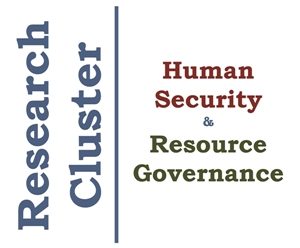Philip Boobbyer, University of Kent
When Dmitri Prokazov and his wife Olga Prokazov recently found themselves caught up in an unsanctioned demonstration in Moscow, while out with their one-year-old son, they didn’t expect it to end with prosecutors threatening to strip them of their parental rights.
But this is exactly what has happened – a district court in the city pressed for the child to be taken into care, on the grounds that at one point during the protest their son was handed over to a third person (a close friend) – which supposedly put the child’s life in danger. Investigations have also been carried out against other people who took part in the protests with young children.
The July 27 demonstration was one of a series of protests that have been held in the city recently after authorities disqualified a number of opposition candidates from standing in local elections. Thousands were detained at the protests which authorities consider unauthorised and illegal.
Investigators have now dropped criminal charges against Dmitri and Olga Prokazov after public outcry. But the couple say they continue to live in fear that child protection services could come and take their son away at any moment.
For demonstrators, the implication is clear: opponents of the regime who have young children should think twice before getting involved in any protest – and there is a tradition here.
Intimidation and control
“Hostage-taking” is not a new tactic for the Russian state. Indeed, the targeting of the families and networks of “enemies” goes back at least to the Russian Civil War. In the summer of 1918, for example, Vladimir Lenin ordered that 25-30 hostages be detained in every grain-producing region, with the idea that they would be answerable with their lives for failing to meet grain procurement targets.
During the Russian Civil War, Leon Trotsky also insisted on the imprisonment of the families of former tsarist officers serving in the Red Army to ensure their loyalty. While the Cheka (later the KGB) used hostage-taking ruthlessly during the Red Terror – a period of political repression and mass killings, that began in 1918. This was terror as a form of propaganda, with the justification that the regime was in a struggle for survival.
Read more: Dispatches from Red Square: reporting Russia’s revolutions then and now
Joseph Stalin also deployed similar methods. In the 1930s the family of any “enemy” became a legitimate target. A decree of June 1935 established that spouses and children of people who fled abroad were liable to five-year terms of exile – whether or not they knew anything about it.
A couple of years later, in the infamous Order 00447 of July 1937 – which set out numbers for people to be killed or incarcerated – one of the targeted groups was families whose members were “capable of anti-Soviet actions”. The phrasing was conveniently elastic. In the show trials of the late 1930s, pressure was put on defendants to toe the line in exchange for lenient treatment of their relatives.
Heavy-handed tactics
Stalin’s death in 1953 led to a decline in terror, but authoritarian practices did not disappear. The KGB under Yuri Andropov – a figure much admired by Vladimir Putin – was adept at devising subtle forms of coercion, sometimes termed “prophylactic methods”.
Applying pressure on people through their families and friends continued to be a trusted method of intimidation. The editors of the human rights journal, Chronicle of Current Events, founded in 1968, were once told that whenever any edition of the magazine appeared, there would be arrests of people not directly involved. And that they could improve the conditions of political prisoners if they moderated their activities.
The intention in this was to load onto dissidents a sense of guilt for actions that the regime was itself responsible for. The physicist and dissident, Sergei Kovalev – who was for a time chairman of the President’s Human Rights Commission in the 1990s – once observed that hostage-taking was the “foundation” of the Soviet system. But he insisted that responsibility for repressions lay “not with us, but with the regime”. His colleague, Tatiana Velikanova – who helped produce the Chronicle of Current Events – fiercely rejected all forms of hostage-taking, declaring herself determined not to engage in what she called “these compromises and collusions”.
Hostage-taking also had pre-revolutionary roots, in the practice of what in Russian is called krugovaia poruka. This phrase, which translates as “circular guarantee”, means something like “collective responsibility”. If for example someone failed to pay their taxes, other families were required to step in. This encouraged local institutions to take a strict line against dissent to guard against the possibility of everyone’s lives suffering for the behaviour of one person.
A powerful message?
But of course, hostage-taking is not a technique exclusive to Russia. Many countries have used it either in a military or a psychological sense. Indeed, if threats to civilians in war are counted as a kind of “hostage-taking”, then it would be difficult to find any powerful country that has not deployed these means at some point.
But such methods will not create an enduring stability. Indeed, the tactics of hostage-taking can only have unhappy consequences for a country – as a climate of fear stifles creativity and destroys the possibility of healthy national development.
Philip Boobbyer, Reader in History, University of Kent
This article is republished from The Conversation under a Creative Commons license. Read the original article.
